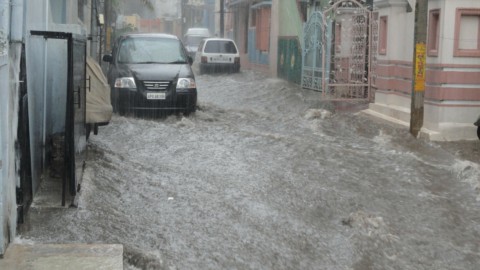Italy suffered economic losses for over 62 billion dollars during 2022 due to catastrophic natural events triggered by climate change, which should shine a beacon on the need to take structural measures as soon as possible, not only to protect the environment and human lives, but also to avoid wasting funds.
In particular, Italy has lost over 13 million dollars due to the fire occurred last year between June and July, another 25 million dollars for the hail storms recorded in August alone and another $24 million due to floods in the Marche in September 2022 and in Ischia in November.
This is the dramatic balance made known by Aon plc, the world's leading professional services firm, with its postponement 2023 Weather, Climate and Catastrophe Insight, which identifies global trends in natural disasters and climate change to help make better decisions to manage volatility and improve global resilience.
Globally economic losses of 313 billion dollars
“Natural disasters have caused global economic losses for $313 billion in 2022, 4% more than the 132st century average, of which $2022 billion is uninsured,” the report said. The data shows that XNUMX was the fifth year costlier for insurers, with an estimated $50-55 billion of insured losses globally resulting from theHurricane Ian in the United States, the second most expensive natural disaster in history from an insurance standpoint. While the majority of total losses in 2022 remained uninsured, the 58% "protection gap" was one of the lowest on record, highlighting a positive shift in how firms are addressing volatility through risk mitigation. risk and how insurance companies are providing additional protection to underserved communities through access to capital.
Catastrophic events are increasingly frequent due to climate change
“The effects of climate change which lead to catastrophic events heavier and heavier, in terms of economic losses edthe human lives, are increasingly frequent also in Europe" He says Peter Toffanello, Chief Executive Officer of Aon Reinsurance Italy. “This report urges us to work on scalable solutions for reduce this type of risk and to make better decisions based on data and analytics”. Technological innovation in recent years has allowed for a better understanding of how natural disasters take place and a faster and more thorough assessment of damage after an extreme climatic event.
However, the Aon study reaffirms the need to build complex strategies that take into account the mitigation of climate change risks on all fronts.
In 2022 there were 421 natural disasters in the world
In 2022 they were registered 421 events worldwide of noteworthy natural disasters, more than the 396st century average of XNUMX. In them they have lost his life 31.300 people, of which 19.000 in Europe alone, mainly due to heat waves. L'Hurricane Ian it was the second most expensive natural disaster in history to insure, surpassed only by theKatrina in 2005. In Europe instead it is Eunice la wind storm most expensive since 2010, with $3,4 billion of insured losses. He spread them hailstorm in France contributed to the country's second-highest natural disaster compensation at €6,9 billion ($7,4 billion).
La droughts and heat waves they have hit Europe, the United States, China and other countries hard. Global drought risk insurance payouts were the second-highest on record, at $12,6 billion worldwide.
“The ravages caused by natural disasters around the world demonstrate the need wider adoption of risk mitigation strategies, including better disaster management and early warning systems that enhance resilience,” he said Michal Lörinc, head of Aon's Catastrophe Insight. “While the impacts of the climate change become increasingly visible around the world, it is socio-economic, demographic and wealth distribution aspects that remain one of the main factors of financial loss. The data in this report will help organizations not only improve their risk mitigation, but also take action to close the global security gap to better protect the communities where we live and work.”





